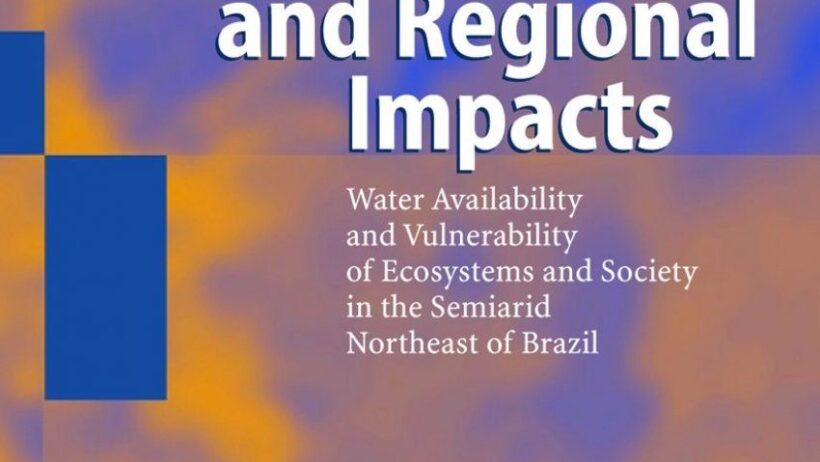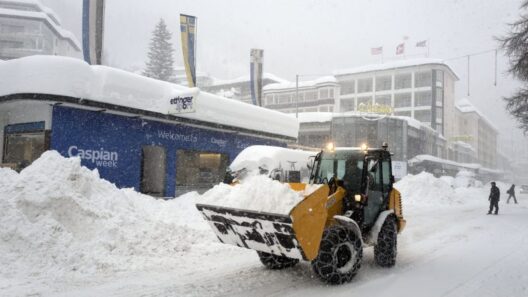Climate change is a multifaceted phenomenon that engenders a plethora of ramifications on both global and regional scales. As the Earth’s temperature rises, it brings about not only environmental transformations but also economic, social, and political upheavals. Have you ever pondered how changes in climate patterns might alter the very fabric of daily life in specific regions? This question underscores a significant challenge: the disparity in impacts felt across various locales, prompting a pressing need to examine these consequences more closely.
The global implications of climate change are vast and interconnected. Rising sea levels, driven by melting glaciers and polar ice caps, threaten coastal communities worldwide. Coastal erosion has become more pronounced, undermining infrastructure and leading to displacement. A playful thought emerges: what if coastal cities began to adopt amphibious architecture, effectively turning urban planning on its head? Such an innovation could illustrate both the adaptability and resilience required in response to changing climates.
On a larger scale, the increase in average global temperatures invokes broader ecological disruptors. The distribution of flora and fauna—ecological systems that took millennia to establish—now faces an uncertain future as species migrate toward cooler habitats. Biodiversity loss presents a critical challenge, as each species coexists in a delicate balance. The looming extinction of specific organisms not only alters ecosystems but can also have dire consequences on food chains and agricultural systems.
Moreover, the issue of food security intimately ties back to regional impacts of climate change. Altered precipitation patterns and the ubiquity of extreme weather events lead to unpredictable harvests. These shifts can precipitate local food shortages, particularly in regions reliant on agriculture. Furthermore, the ripple effects on economies dependent on certain crops underscore a complex web of interdependence. Can we innovate sustainable agricultural practices quickly enough to combat these persistent threats, or are we witnessing the unfolding of an irreversible crisis?
Particular regions are uniquely vulnerable due to their geographical and socio-economic contexts. For instance, the arid zones of sub-Saharan Africa face intensified droughts exacerbated by climate change, significantly influencing water availability and agricultural productivity. In tandem, socio-economic factors such as poverty and lack of infrastructure compound these challenges, creating a feedback loop that entraps communities in a cycle of vulnerability. What strategies can be deployed to uplift these communities in the face of adversity, ensuring resilience rather than despair?
Conversely, temperate regions, while experiencing their own set of challenges, might demonstrate a contrasting resilience. For example, North America is witnessing shifts in climate that could lead to longer growing seasons in certain areas. However, this potential boon is coupled with an increase in pests and diseases, which can devastate crops. How can policymakers harness the potential benefits of climate adaptation while mitigating the associated risks? This duality embodies the conundrum of accepting change while striving for stability.
In urban environments, climate change presents distinct trials as cities grapple with heatwaves, intense rainfall, and flooding. Infrastructure, often outdated, struggles to cope with these new realities. Reports of ‘urban heat islands’ exemplify the phenomena where cities experience higher temperatures than surrounding areas, amplifying health risks for inhabitants. As municipalities work to combat this, could the integration of green roofs and urban forests provide a beacon of hope for enhancing urban resilience?
Moreover, policymakers across the globe are beginning to appreciate the breadth of these regional impacts, recognizing that effective climate policy must consider local conditions. Implementing adaptive strategies tailored to specific needs becomes vital. The dialogue surrounding climate justice becomes essential; vulnerable populations must have a voice in policy formulation. The challenge remains: how can we ensure equitable access to resources and adaptation strategies, allowing all communities to thrive in a changing environment?
Internationally, cooperation and commitment to climate action are paramount. The disappointment surrounding past agreements often gives way to skepticism, yet the imperative for unified action is undeniable. As nations deliberate over greenhouse gas emissions, the challenge of balancing economic growth with ecological conservation continues to simmer. The question arises: will global collaboration transcend political boundaries, allowing a concerted effort to confront climate change’s forthcoming threats?
Furthermore, the proliferation of renewable energy sources presents both opportunities and challenges. The transition to a low-carbon economy through wind, solar, and other sustainable technologies holds enormous potential to mitigate climate effects. Yet, the development and implementation of these technologies must be approached with careful consideration. For example, the mining of rare earth minerals necessary for these technologies may create environmental degradation in regions where these materials are sourced. The inquiry becomes: can we champion innovation while safeguarding the ecosystems from which we derive these materials?
In summary, the stark reality of climate change epitomizes a daunting challenge that reverberates through global and regional spheres. It is not merely an environmental issue but an intricate tapestry of socio-economic, technological, and political dilemmas. The ramifications are profound, extending beyond borders and cultures. As we contemplate the path forward, embracing innovative solutions and equitable participation remains paramount in safeguarding the planet and its inhabitants. Can humanity respond with the urgency and ingenuity necessary to navigate these formidable waters, or will we succumb to the very changes we have precipitated?








